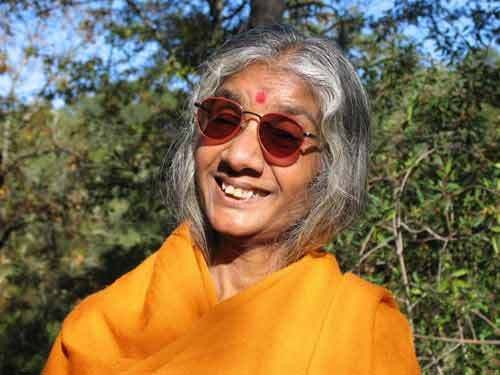
Photo of the week – Mar 4 – Mar 10 2007
(Picture taken early 2007 at Devi Mandir, Napa, CA)
Check out our new weekly blogs.
Temple of Divine Mother

Photo of the week – Mar 4 – Mar 10 2007
(Picture taken early 2007 at Devi Mandir, Napa, CA)
Check out our new weekly blogs.
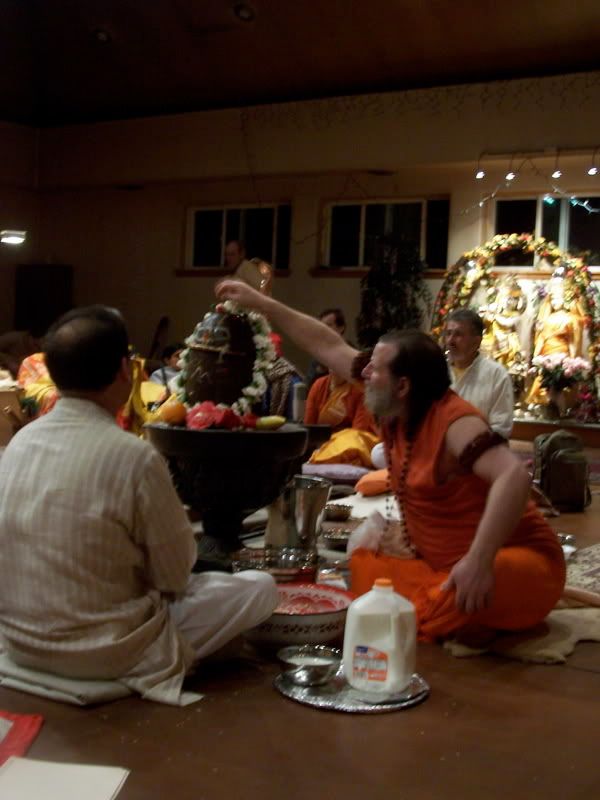
Photo of the week of Feb 25 – Mar 3 2007
(Taken on MahaShivaratri, Feb 15 2007 in front of Yajneshwar, at Devi Mandir, Napa, CA)
Check out our weekly blogs.
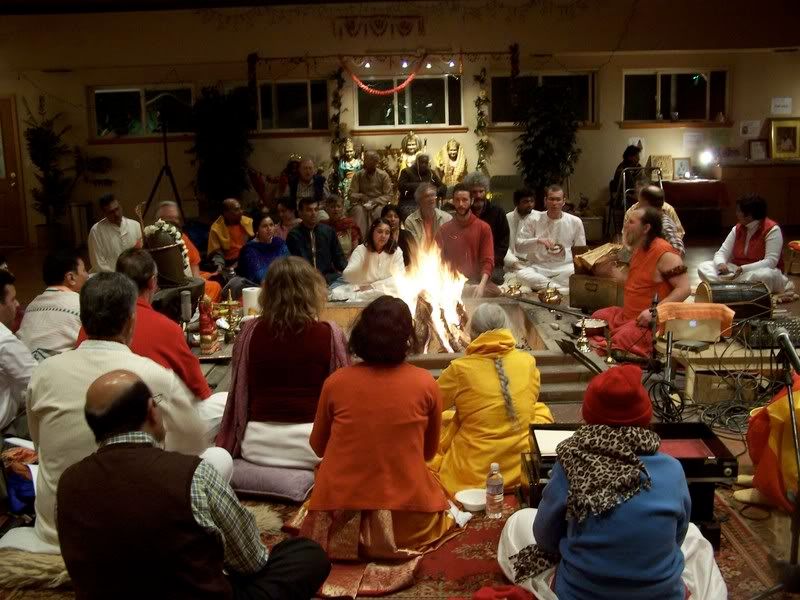
Photo of the week of Feb 18 – Feb 24 2007
(Taken on MahaShivaratri, Feb 15 2007 at Devi Mandir, Napa, CA)
Check out our weekly blogs.
Guru: The syllable Gu means darkness, Ru means light. The Supreme Divinity which destroys ignorance is verily the Guru, without a doubt. The Guru is Brahma, the Guru is Vishnu, […]
This has been a very eventful week for the sankalpa. The highlight was a wonderful note from Shree Maa blessing the sadhaks.
Shree Maa said (in an email)
Beloved Children,
I am thrilled with your sankalpa.
Earth Mother needs you. Keep going with Her. Earth Mother and you guys are not separate. All of you will get lots of blessings.
Alright! Arise! We are marching ahead with Earth Mother’s Flag!
I love you all.
Shree Maa
A lot of us, charged with the power of Maa’s words gave an extra push to do more this week. Our group’s grand total crossed 170,000 repetitions.
Some of the devotees organized a satsang in their home town, and began their practice with the group. Here is what the devotee had to say:
Many that we emailed expressed interest in joining the 2007 peace mantra sankalpa. Around ten joined us tonight for satsang. It was FUN! We discussed the Chandi Path, the mantra and mantra practice based on teachings and sharings from Swamiji, others in the on line group and our experiences. We did the sankalpa prayer, started the practice, sang araati and kirtan. The bhav was high and participants seemed inspired.
Hearing these experiences motivated our group and participants even more. Here are the individual totals as of this week (21 Jan 2007).
This is the total for those that preferred to do their sadhana at the fire
| Name |
Number of Mantras
|
| Michael | 3132 |
| Janitri | 1080 |
| Total | 4,212 |
and below are the counts for those of us that do the sadhana without a fire
| Name |
Number of Mantras
|
| Babu | 1296 |
| Chris | 2808 |
| Debi | 5076 |
| Donna | 1790 |
| Durga | 756 |
| Egyirba | 2160 |
| Eric | 7452 |
| Gauri | 3132 |
| Henny | 2700 |
| Janitri | 540 |
| Jayadeva | 4428 |
| Julia | 1620 |
| Kalachandra | 4536 |
| Kaliananda | 3888 |
| Kamalaji | 2916 |
| Kanda | 4320 |
| Karen | 4800 |
| Marsha | 324 |
| Mausumi | 2592 |
| Michele | 700 |
| Morningsong | 5400 |
| Muktimaa | 3564 |
| Nirmalananda | 700 |
| Nanda | 3360 |
| Papia | 648 |
| Parvati | 1080 |
| Patty | 4584 |
| Prasana | 3540 |
| Prathibha | 3665 |
| Raghu | 3564 |
| Rick Veda | 13176 |
| Robin | 1088 |
| Rolf | 2700 |
| Rukmani | 756 |
| Sadhu Maa | 1620 |
| Sadhvi | 4410 |
| Sundari | 2484 |
| Shankari | 1944 |
| Surya | 31050 |
| Susan | 1080 |
| Usha | 9828 |
| Wendy | 2656 |
| Visveshwar | 3780 |
| Yogini | 6480 |
| Total | 170,991 |
~~OM~~
Sati, the consort of Shiva was the daughter of Daksha Prajapati a descendant of Brahma. Sati had married Shiva against the wishes of her father. The vain Daksha performed a great yagna (with the sole aim of insulting Shiva), to which he invited all of the gods and goddesses except his son-in-law Shiva. Sati learned about her father’s yajna from Narad Muni. She asked Shiva’s permission to attend the yajna, saying that a daughter did not need an invitation from her father. Shiva said that Daksha was trying to insult him, and so even if Sati attended the yajna, the fruit of the sacrifice would not be auspicious. Therefore he bade Sati not to attend the yajna.
Sati became furious – She thought that Shiva was treating her like an ignorant lady and not as the mother of Universe. So to show Shiva who she really was, she assumed a different form – the one of the Divine Mother. The oceans raged and the mountains shook, the atmosphere was filled with the wonder of her form. Shiva began to shake and tried to flee. In every direction that he tried to flee, the Divine mother stopped him. The Divine Mother had multiplied herself into ten different forms guarding the ten different directions and try as Shiva might, he could not escape from her, as she had blocked every escape route.
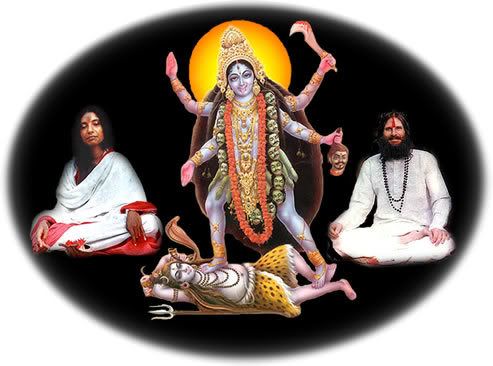
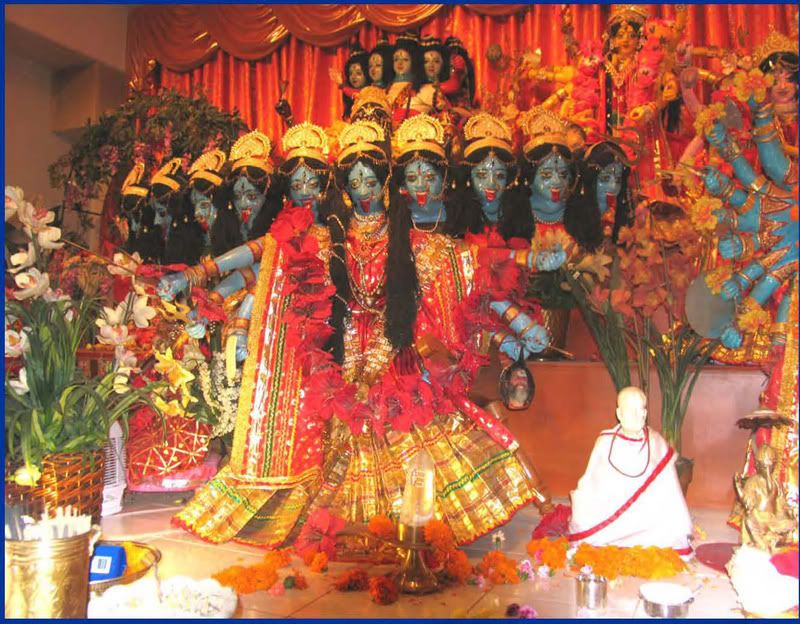
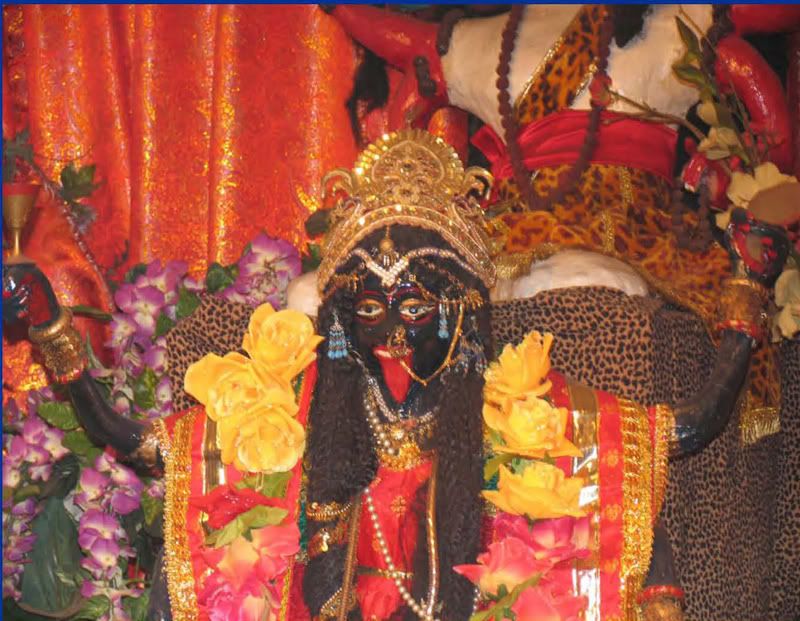
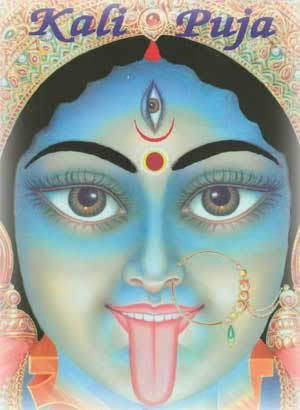
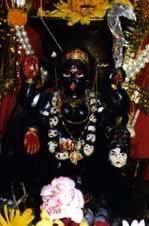
This video series includes both Sanskrit and English translation. In this video series, Swami Satyananda Saraswati help us make the shift from studying the Bhagavad Gita as intellectual pursuit – […]
By Paul Logan, Journal Staff Writer
Friday, November 10, 2000
A woman many believe to be one of the rarest individuals on earth “a living saint” has come to Albuquerque to share her love.
Shree Maa, “the respected Holy Mother,” said Thursday she is here because “I love to see my family. The whole universe is my family.”
Draped in layers of orange, red, gold and yellow clothing with beads around her neck and wrists, the graying, middle-aged Hindu holy woman with a gentle voice is about 5-feet, 5 inches tall and less than 100 pounds.
Maa said she has been enlightened since her birth in Assam, the northeast corner of India. Having enlightenment includes experiencing pure love and comprehending truth.
Sitting cross-legged on a couch at a Northeast Heights home, Maa said she attended an international yogi conference in Texas and is returning by motor home to California. Her home is a modest trailer in the mountains, about a half hour outside of Napa.
Maa said she has been sent “to perform God’s work in this world.”
Maa spends about nine months each year traveling throughout the world to share her teachings.
Instead of attracting followers, she said wants to show people of all faiths how “to build temples in their hearts and in their minds.”
Her assistant, Swami Satyananda Saraswati, or Swamiji, said a person’s every action can change a house into a temple. By respecting one’s actions, a person is paying attention to what he or she is doing.
“So any action that we do without selfishness can be a form of worship,” Swamiji said. “We can make divine everything that we do.”
During the interview, some of Maa’s devotees were chanting scriptures in Sanskrit in another room. Nearby, a coffee table had been converted into an altar with pictures and symbols from the world’s great religions, including Jesus, Buddha and Mary as well as flowers of every color and candles.
Swamiji said Maa adheres to the famous Indian proverb: “Just as many as there are individuals, so many are there paths to God.”
He said her programs are open to everyone and called them “unique” because “she makes worship fun.”
Maa said she offers those who attend three things: pure love, accepting everyone for what they are; inspiration, meaning she motivates each person to help make them better; and appreciation, recognizing every effort a person makes.
She met the late Mother Teresa, who some Catholics considered a living saint, years ago in Calcutta. Maa said she wanted to see her “because she is my family, also … I love her.”
Maa’s message includes being true to one’s self because then a person is without fear. With a clear conscience, a person’s heart is silent. “That,” she said, “is peace.”
Also:
WHEN: Today, 7 p.m., at Futures For Children building, 9600 Tennyson NE (332-4146); Saturday, 1 p.m., the home of Al and Dianne Lopez, 900 Avenida Cielito NE (255-4169); and Sunday, 1 p.m., again at Futures For Children
WHAT: Programs of meditation, singing, storytelling on Friday and Sunday; fire ceremony on Saturday
HOW MUCH: Free and open to everyone
1. Are there parts of other Puranas which are used/chanted in the same manner as the Chandi Path from the Markendaya Purana or is this practice of chanting the Chandi unique?
The Devi Gita is an excerpt from Shrimad Devi Bhagavatam, the Bhagavad Gita is an excerpt from Mahabharat, the Guru Gita comes from Skanda Purana.
2. Why are Madhu and Kaitabha called “Too Much” and “Too Little”, respectively?
The dictionary meanings for Madhu mean specifically honey, sweet, pleasant, charming, delightful. In excess it is intoxicating. The extension with poetic license is Too Much.
Kaitabha in the dictionary means as insignificant as an insect: Too Little.
Together they stand for every extreme which keeps us from maintaining our balance.
3. If one has taken sankalpa to chant say the Devi Gita and the Chandi Path for a certain amount of time and due to one’s life situation one cannot chant the Chandi along with the Gita can the sankalpa to chant the Chandi and the Devi Gita be changed in mid stream or does the cycle need to be completed?
We want to strive to complete our sankalpas. Sometimes it is not possible. When it is not possible, we ultimately must surrender and try to accomplish our goals again the next time. We will also want to be forgiving; to others as well as to ourselves.
4. Do we have to do the full kushandika as in the book, or would it be ok to offer a light and a flower if we are pressed for time and then chant for instance the Sapta Shloki Durga, as a kind of preparation for chanting the Chandi more regularly?
Each according to his or her capacity. There is a viddhi called Seedha Path, which is described in the book on Pronunciation.
5. In the Chandi Path, when do we add “svaha” at the end of each verse, and when do we not add that?
When we are doing a Homa, we do not add svaha after the verses in the Kushandika, Kavacham, Argala Stotram, Kilakam, and the Dhyanams. We do not add swaha after any of the verses, unless the verses contain swaha, if we are not at the fire.
Also in the book on Pronunciation is a description of the homa viddhis.
6. Do verses 2 and 3 of siddha kunjika stotram (na kavacam nargala…) proclaim the superiority of that stotram or that of the Navarna Mantra?
Actually the Navarna Mantra is the root mantra of the Chandi.
7. What is a stotram?
It is a specific song about a particular form of divinity.
8. I was taught that the act of clapping e.g. while saying phat (“cut the ego�) assists in clearing mind, banishing thoughts. How does that happen, energetically?
The clap is a starling sound which demands that the mind pay attention.
9. Do raktabija, seed of desire, and vasana mean the same thing?
Yes.
Interview with Shree Maa at Sedona in 2006.
~~OM~~
Shree Maa often talks about, “Satyam, Shivam, Sundaram – Truth, Infinite Consciousness and Beauty.”� Shree Maa says, “If you live in truth and beauty, you will get infinite consciousness.” When we watch Mother, hear Her speak or listen to Her singing, we know She is living in Truth and Beauty. In Her every act and move we see, we feel and we admire these qualities.
We want to learn how we, too, can imbibe these qualities and be in that place of perfect truth, beauty and pure love. “Step by step, my children,”� She tells us lovingly with a smile.
One step we can all begin with is worship or puja. Maa does puja every single day multiple times, beginning many hours before day break. Puja is the Sanskrit word for worship; it is composed of “pu” and “ja” and means that which gives birth to merit.
Shree Maa and Swamiji tell us that, “Worship means attention.” When we do any action with complete attention, we are engaged in worship. Therefore, puja is not limited to the time we sit in front of our altar, but can conceivably fill every moment of our lives. The practice of doing puja each day helps us to make our entire life a festival of worship.
At the tender age of four, Shree Maa started doing puja in Her family shrine every day. She learned all the mantras and mudras and vidhis to worship numerous deities. As she grew older, she was often invited to neighbors’ houses to do worship there also. Every morning before day break she got up to bathe in the pond and wear a red-bordered puja saree, and sat down to worship. One day when she was a little girl, she went to the pond in the pre-dawn darkness and slipped and fell. She hurt her hand and was not even able to move. She was in a lot of pain and her hand had to be tied in a sling. Still, she did not let that pain stop her from doing her worship.
In India, Maa went from house to house teaching people how to do puja. She encourages us to do puja and to learn the mantras. “If you learn the mantras by heart, the Gods will always be with you,”� She once told us. In America too, Shree Maa and Swamiji have helped many, many devotees set up altars in their houses and to get started with regular worship to make their house into a temple.
Shree Maa and Swamiji say, “Worship is the bridge by which we cross from duality to non-duality.”
This week we will be discussing puja, “what are the steps, what does it mean in practice, how we can use this practice to make all of life a puja (worship).”
Please join us in worship!
Mrikand Muni, Markandeya’s father performed tremendous austerities to get a son from Shiva. After some time Lord Shiva appeared to him and asked him what boon he wanted. Mrikand Muni told Shiva that he wanted a son.…read more
Part 4. This is the story of the life of Trailinga Swami, an Indian Saint who did tremendous sadhana for over 250 years and attained to the heights of spiritual knowledge. Even during his life, many realized him to be an incarnation of Shiva. Shree Maa has had an intuitive sense of him for many years of her life, and would like to share this life with all of us as a source of inspiration for perseverance in our sadhana.
Part 3. This is the story of the life of Trailinga Swami, an Indian Saint who did tremendous sadhana for over 250 years and attained to the heights of spiritual knowledge. Even during his life, many realized him to be an incarnation of Shiva. Shree Maa has had an intuitive sense of him for many years of her life, and would like to share this life with all of us as a source of inspiration for perseverance in our sadhana.